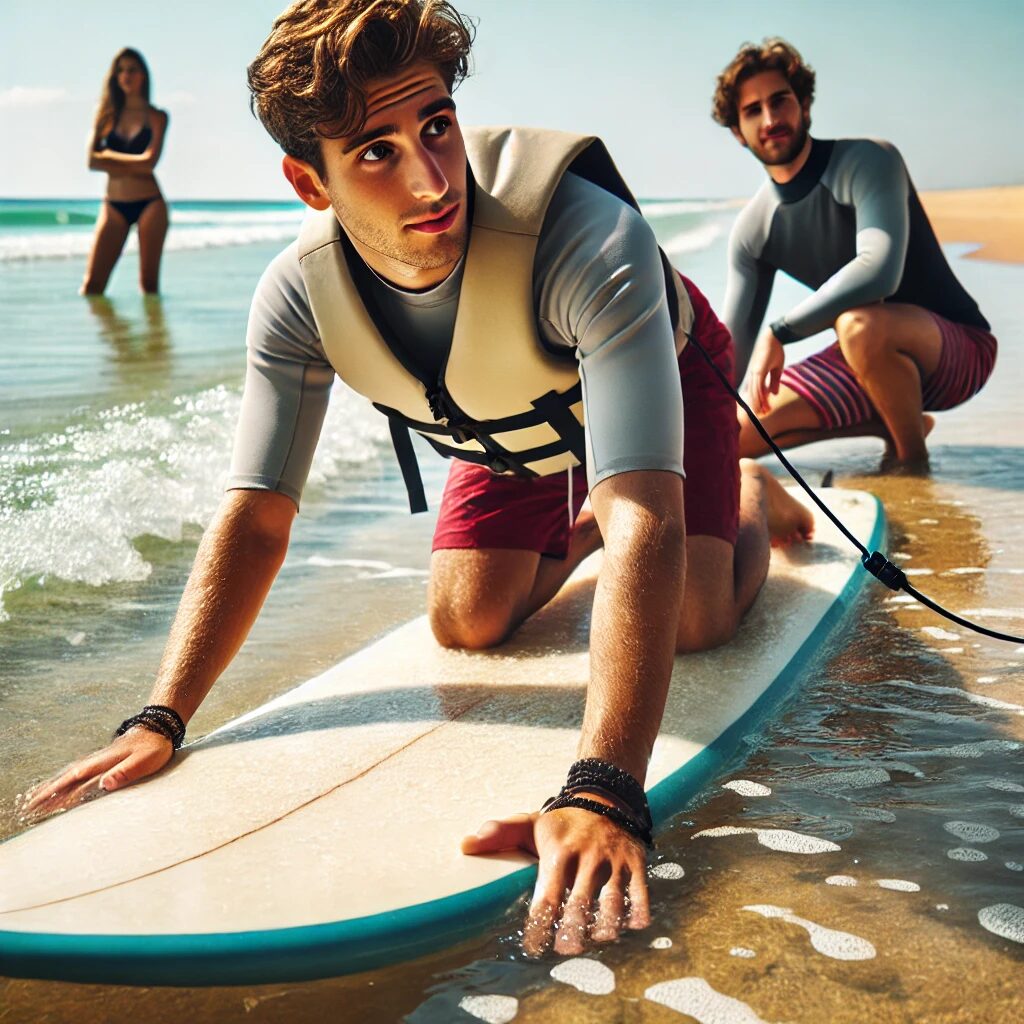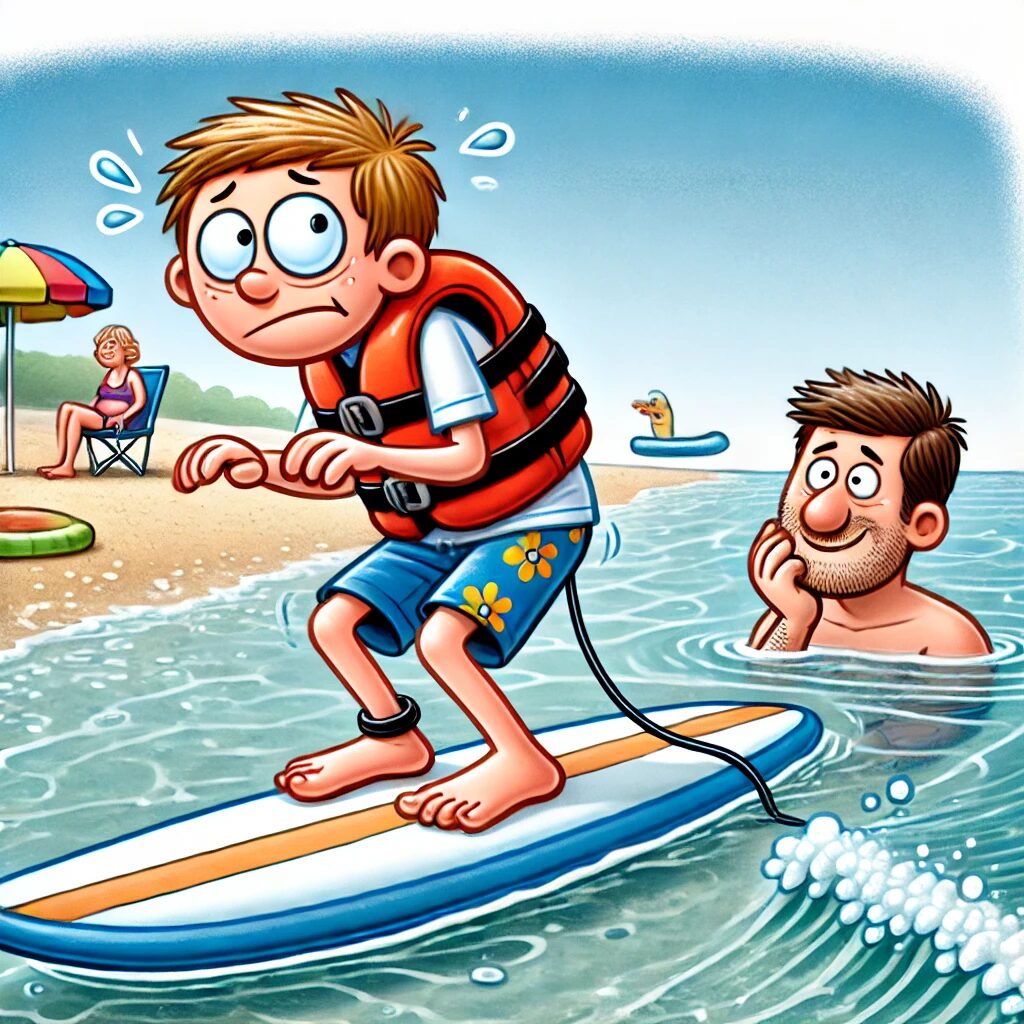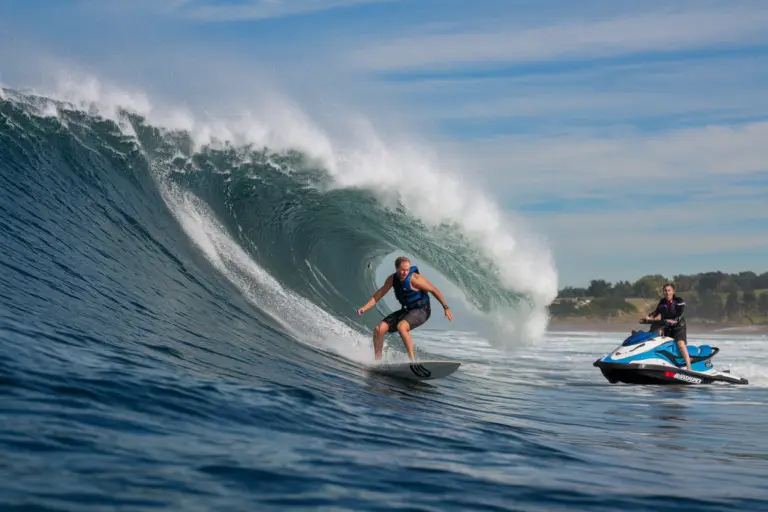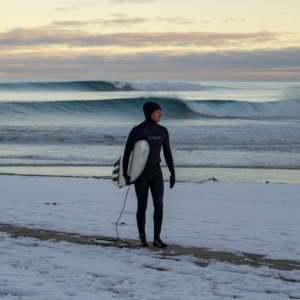Surfing, a sport synonymous with freedom and the thrill of riding waves, often portrays surfers effortlessly gliding across the ocean’s surface. Yet, beneath the allure of sun, sea, and surf, lies the ever-present fear of drowning. Among the myriad of gear choices surfers must make, the question arises: should surfers wear a life jacket? While traditionally not part of the surfer’s toolkit, life jackets are becoming a topic of debate within the surfing community.
On one hand, life jackets could potentially save lives in the event of an accident or sudden weather change. On the other hand, they might be seen as restrictive or unnecessary by seasoned surfers who prioritize freedom of movement.
The Challenges of Surf Safety
When you think of surfing, the image that likely comes to mind is one of pure, unbridled exhilaration. The ocean, the board, the waves—it’s a trifecta that promises both thrill and tranquility. Yet, as with any adventure sport, there’s an underlying current of risk that cannot be ignored. Enter the debate on life jackets, or as some might call them, personal flotation devices (PFDs). The question of whether these buoyant vests belong in the surf culture is more nuanced than it seems.
The Pros: Buoyancy, Safety, and Peace of Mind
- Enhanced Buoyancy: One of the most significant advantages of wearing a life jacket is the added buoyancy. In rough waters or during wipeouts, this buoyancy can prevent a surfer from being pulled under by strong currents or waves. For beginners, who might not yet have perfected their paddling and swimming techniques, this extra lift can be a literal lifesaver.
- Increased Safety in Extreme Conditions: Life jackets can be particularly beneficial in challenging surf conditions, such as those with powerful undertows or large, unpredictable waves. In such scenarios, even experienced surfers can find themselves in precarious situations. A life jacket can provide that crucial margin of safety, offering a lifeline when nature’s forces become overwhelming.
- Peace of Mind: For some surfers, especially those who are just starting or with limited swimming skills, wearing a life jacket offers peace of mind. It can alleviate the anxiety that sometimes accompanies venturing into the ocean, allowing surfers to focus more on enjoying the experience rather than worrying about potential dangers.
The Cons: Restriction, Culture Clash, and the “Grom” Factor
- Restriction of Movement: One of the most commonly cited drawbacks of life jackets is the perceived restriction they impose. Surfing requires a high degree of flexibility and agility, and some argue that life jackets can impede these movements, making it harder to paddle, duck dive, or even pop up on the board.
- Cultural Perception: Surfing has a strong cultural component, characterized by a laid-back, minimalist approach. Traditional surfers often view life jackets as unnecessary, and there’s a concern about a potential stigma attached to wearing one. In a sport where image and style can be as important as skill, this cultural clash can deter surfers from considering life jackets.
- The Grom Factor: For younger surfers, affectionately known as “groms,” peer perception can be a big deal. Wearing a life jacket might make them feel less cool or less authentic compared to their peers. This social pressure can discourage the use of life jackets, even if they might be beneficial for safety.

Weighing the Pros and Cons of Life Jackets for Surfers
The question of whether surfers should wear life jackets boils down to a careful consideration of both benefits and potential drawbacks. To provide a clear picture, let’s delve into a detailed comparison of nine key pros and cons associated with life jackets in the surfing context. This exploration will help clarify the practical and cultural factors that influence this debate.
The Pros of Wearing Life Jackets
- Enhanced Buoyancy: Life jackets provide added buoyancy, helping surfers stay afloat even in rough waters or during long wipeouts. This buoyancy can be especially valuable for beginners and those not confident in their swimming abilities.
- Increased Visibility: Brightly colored life jackets can make surfers more visible to lifeguards and other watercraft, enhancing safety in crowded or low-visibility conditions.
- Protection from Impact: In addition to flotation, life jackets can offer a degree of protection against impact from the surfboard or rocks, reducing the risk of injury.
- Warmth: Some life jackets offer additional insulation, helping surfers stay warm in colder waters, which can be crucial for preventing hypothermia.
- Peace of Mind: For novice surfers or those with past near-drowning experiences, wearing a life jacket can provide significant psychological comfort, making the surfing experience more enjoyable.
- Support for Extended Surf Sessions: The buoyancy provided by life jackets can reduce fatigue, allowing surfers to stay in the water longer without tiring as quickly.
- Enhanced Safety for Big Wave Surfing: In big wave surfing, where the stakes are higher, life jackets can be a critical safety measure, providing essential flotation in massive, powerful waves.
- Emergency Situations: In unexpected situations, such as sudden weather changes or injuries, life jackets can provide vital support, keeping surfers afloat until help arrives.
- Adaptability for Various Water Activities: Life jackets are versatile and can be used for other water sports, making them a good investment for those who enjoy multiple aquatic activities.
The Cons of Wearing Life Jackets
- Restriction of Movement: Life jackets can feel bulky and restrict movement, making it harder for surfers to paddle, maneuver, and perform tricks on their boards.
- Cultural Stigma: Within the surfing community, there can be a stigma associated with wearing life jackets, seen by some as unnecessary or unorthodox, which might influence individual choices.
- Potential for Discomfort: Life jackets can sometimes chafe or feel uncomfortable, particularly if they are not specifically designed for surfing.
- Reduced Performance: The added buoyancy of life jackets can alter a surfer’s balance and board dynamics, potentially impacting performance, especially in critical maneuvers.
- Cost Considerations: Quality life jackets can be expensive, and not all surfers may want to invest in additional gear.
- Incompatibility with Certain Surf Conditions: In calm, shallow waters, or for surfers with high skill levels, life jackets may seem redundant and unnecessary.
- Heat Buildup: In warmer climates, wearing a life jacket can lead to overheating, as it can trap body heat.
- Social Pressure: For younger surfers, there might be peer pressure to avoid wearing life jackets, seen as a sign of inexperience or lack of skill.
- Maintenance and Storage: Life jackets require maintenance to ensure they remain in good condition, and storing them can be cumbersome, particularly when traveling.
Pros and Cons of Life Jackets for Surfers
| Pros | Cons |
| Enhanced Buoyancy | Restriction of Movement |
| Increased Visibility | Cultural Stigma |
| Protection from Impact | Potential for Discomfort |
| Warmth | Reduced Performance |
| Peace of Mind | Cost Considerations |
| Support for Extended Surf Sessions | Incompatibility with Certain Surf Conditions |
| Enhanced Safety for Big Wave Surfing | Heat Buildup |
| Emergency Situations | Social Pressure |
| Adaptability for Various Water Activities | Maintenance and Storage |
When to Consider Wearing a Life Jacket
- Challenging Conditions: If you’re tackling large waves, powerful currents, or turbulent waters, a life jacket can offer crucial extra buoyancy. In such conditions, even experienced surfers can benefit from the additional safety net.
- For Beginners: Novice surfers who are still honing their skills might find life jackets especially beneficial. The added buoyancy helps in maintaining buoyancy and stability, reducing the likelihood of fatigue and making it easier to get back on the board after a wipeout.
- Cold Water Surfing: In colder waters, life jackets can provide additional warmth, reducing the risk of hypothermia. Many life jackets are designed with insulating materials that help maintain body heat, making them a practical choice for cold-water surfing.
- Extended Surf Sessions: If you plan to spend an extended period in the water, a life jacket can reduce physical strain and fatigue. The extra buoyancy helps you stay afloat more effortlessly, allowing for longer surf sessions without tiring out as quickly.
- Inexperienced Surfers in Remote Locations: Surfing in less populated or remote areas, where immediate help might not be readily available, increases the value of a life jacket.
When a Life Jacket Might Not Be Necessary
- Calm Conditions: On days when the surf is mild and manageable, and the risk is low, wearing a life jacket might feel excessive. Experienced surfers familiar with local conditions might not find them necessary under these circumstances.
- High Skill Levels: Advanced surfers with strong swimming skills and experience might prefer not to wear a life jacket, as they are comfortable managing their own safety and find the jackets restrictive.
- Warm Water: In very warm waters, a life jacket may cause discomfort due to heat buildup. For these conditions, a well-fitted wetsuit might provide a better balance of warmth and comfort.
- Surf Culture: In regions where life jackets are not commonly used and are seen as an anomaly, some surfers might choose to forgo them to align with local norms and avoid social stigma.

FAQs: Life Jackets and Surfing
Are life jackets mandatory for surfers?
Life jackets are not universally mandatory for surfers. There are no regulations regarding the use of life jackets while surfing. But you may be required to wear a life jackets when you take surf lessons. In some regions, life jackets might be required for certain types of water activities or under specific conditions, but generally, surfers have the discretion to choose whether or not to wear them.
Can wearing a life jacket improve my surfing performance?
While life jackets offer added buoyancy, they can sometimes hinder performance by restricting movement and altering your balance. For experienced surfers, the bulkiness of a life jacket might interfere with their agility and the precise control needed for advanced maneuvers. However, for beginners or those surfing in challenging conditions, the extra support can make the experience more manageable and reduce fatigue, potentially improving overall performance by allowing you to surf longer with less effort.
What type of life jacket is best for surfing?
For surfing, it’s crucial to choose a life jacket designed specifically for water sports. Look for a life jacket that is streamlined and designed to minimize bulk while providing adequate buoyancy. Key features to consider include:
- Low Profile: A life jacket with a slim, low-profile design helps reduce interference with your movements.
- Flexibility: Jackets with adjustable straps and flexible materials provide a better fit and greater freedom of movement.
- Durability: Ensure the life jacket is made from durable, water-resistant materials that can withstand the rigors of surfing.
How should I maintain and care for my life jacket?
Proper maintenance is essential to ensure your life jacket remains in good condition. Follow these tips:
- Rinse After Use
- Dry Thoroughly
- Inspect Regularly
- Store Properly
Are there any alternatives to life jackets for added safety?
Yes, there are alternatives to traditional life jackets for enhancing safety while surfing:
- Wetsuits with Buoyancy: Some wetsuits are designed with built-in buoyancy features, providing additional flotation without the bulk of a life jacket.
- Surf Leashes: While not a flotation device, a surf leash can prevent you from losing your board, which can be a crucial safety measure in rough conditions.
Can a life jacket prevent drowning while surfing?
While a life jacket significantly reduces the risk of drowning by providing buoyancy and making it easier to stay afloat, it does not guarantee complete safety. Surfers should still be aware of their surroundings, understand the conditions, and practice good safety habits. Life jackets are a valuable safety tool, but they should be used in conjunction with other safety measures, such as knowing how to swim, having proper surf training, and being cautious of environmental conditions.
Do professional surfers wear life jackets?
Most professional surfers do not wear life jackets during regular surf sessions. They often rely on their advanced skills, experience, and familiarity with surf conditions. However, some professionals might choose to wear life jackets during training sessions in extreme or massive conditions, such as during big wave surfing or tow-in surfing.
How does wearing a life jacket affect a surfboard’s performance?
Wearing a life jacket can impact a surfboard’s performance by altering your balance and weight distribution. The added buoyancy might change how the board feels in the water, potentially affecting your ability to execute certain maneuvers.
Can I wear a life jacket in combination with a wetsuit?
Yes, you can wear a life jacket in combination with a wetsuit. Many surfers use both for added protection and comfort, particularly in colder waters or challenging conditions. Just ensure that the life jacket and wetsuit fit well together without creating excessive bulk or discomfort. The combination of both can provide enhanced safety and warmth.
So, Life Jackets or Not?
The decision to wear a life jacket while surfing is a deeply personal one, influenced by a myriad of factors including safety, comfort, and cultural norms. Life jackets undeniably offer significant advantages, such as enhanced buoyancy, increased visibility, and added protection, making them a valuable option for certain surfing conditions and for those who are still building their confidence and skills. They provide peace of mind and safety in challenging environments and can be particularly beneficial for beginners and those engaging in big wave surfing.
On the flip side, the cons—ranging from restricted movement to potential social stigma—cannot be overlooked. For experienced surfers and in calmer conditions, the bulkiness and potential discomfort of life jackets may outweigh their benefits. The cultural aspect of surfing, where traditional practices often emphasize freedom and minimalism, also plays a role in shaping attitudes towards life jackets.




